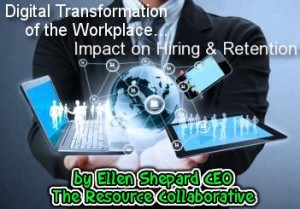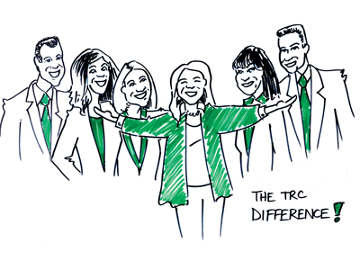Much has been written and discussed about digitization and how it could/would/should impact our lives and our job. As stewards of healthy workplaces, it is critically important that our thinking stretch to understand the impact this will have on the ability of corporations to hire and retain the best employees.
In its research report titled “Predicts 2015: The Digital Workplace Underscores the Benefits of a Consumerized Work Environment”, one of their key findings is that “Digital literacy is not about tool proficiency, but about how well people apply that knowledge to making decisions, cultivating relationships, building reputation, and mobilizing colleagues, teams, communities, or networks to rally around a common cause. Digital literacy focuses on the application of digital insights obtained by mastery of technology, and how those skills become ingrained in people’s behaviors, attitudes and culture”. A key take-away from this is that technology teams need to be encouraged to include employees across the organization in the productive use of their technology and not continue to hold the corporate technology as sacred.
There was a time when this was unthinkable – employees had to deal with many devices in an effort to keep corporate technology separate from their personal technology. The world has become a smaller place and it is just impractical to continue along this path. After all, if you are hiring the appropriate staff and have thoughtful technology guidelines in place, and the staff is productive and the results are present, why should using a personal iPad, a laptop issued by the company or Facebook for research be in question?
In fact, and here is the important kernel of wisdom here… if you do not allow some autonomy in gaining digital literacy across the workplace you will appear arcane and it will be increasingly more difficult to attract top talent and retain them! Here for your detailed pleasure is the Gartner “Predicts 2015: The Digital Workplace Underscores the Benefits of a Consumerized Work Environment”.
http://resources.cio.com/ccd/assets/78349/detail
For excellent Human Capital and Talent Acquisition Services, contact The Resource Collaborative at: info@trcollaborative.com or call us directly (908) 376-2012





















